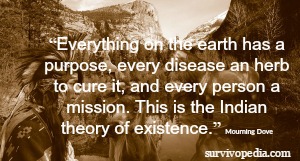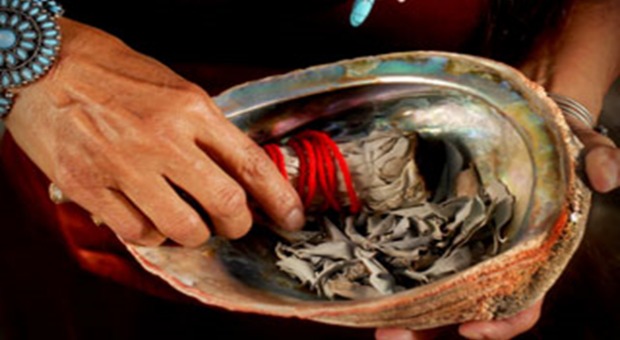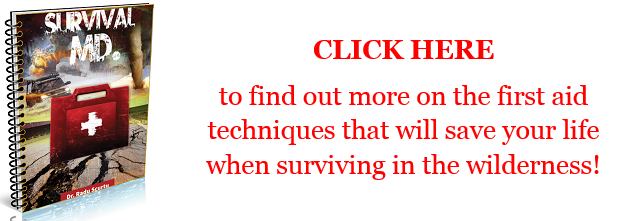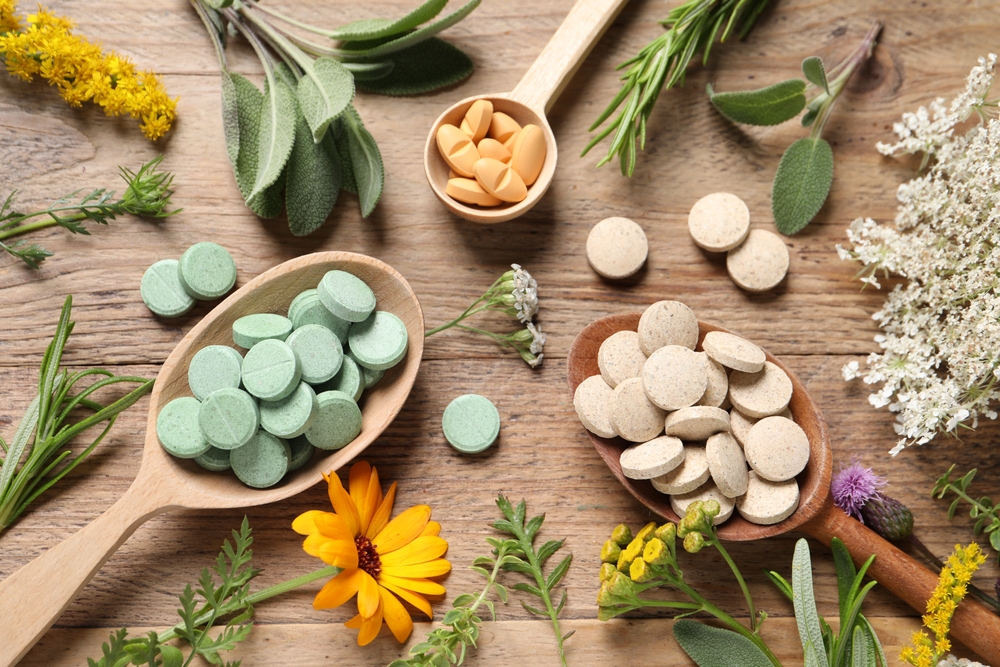Before Europeans discovered the Americas and introduced such diseases as chicken pox, the flu, smallpox, and measles, Native Americans were relatively disease-free and, for the most part, lived long, healthy lives, unless of course famine struck.
Native American remedies for existing illnesses were made of indigenous medicinal plants, many of which were highly effective.
Unlike modern medicine, sick patients weren’t just handed medicine until they either got better or died. Instead, Native Americans took care of their health holistically; it was strongly linked to spirituality.
The Native American ideal state of health and well-being was intrinsically linked to a close connection to the Earth and living in harmony with the environment.
In other words, they weren’t the “savages” that Europeans assumed that they were; I’m sure that, if they had the European desire for progress and financial gain, the Americas would have been vastly different than they were when Columbus found them. Instead, they believed that natural balance must be maintained. Life was about coexistence, not the almighty dollar.
But, if you take a look at what they actually did to maintain that balance, you may be surprised to find that their methods coincide with what modern medical practitioners preach on a daily basis.
Regular Cardio and Strength Training
Many tribes greeted the dawn with an early morning run to celebrate the arrival of a new day. How many people do you know that run in the mornings (or at some point during the day) as part of their exercise routine?
Of course, along with the physical exercise they also benefited from the release of stress-releasing hormones that we now know comes from physical exercise. Since running was, in large part, spiritual, there was also surely the clarity of mind that comes with meditation.
Oh, and we can’t forget that regularly carrying animal carcasses, curing hides, carrying water, setting up and tearing down camps, and participating in ceremonies and games that centered on acts of physical strength are all examples of strength training in its purest form.
Healthy Diets
The Native American concept of fast food was eating berries, fruits, and nuts as they picked them. They didn’t typically gorge themselves unless it was a celebratory feast and the only chips they had were possibly buffalo chips – depending on location – that they used to start a fire (or possibly create a home remedy).
Everybody now is preaching that free-range, organic, hormone-free meat is the only healthy option. Well guess what – the Native Americans were already following that diet. They treated sick animals in the same way that the treated sick people – herbally.
Either that or they just put them down and maybe ate them, depending on the illness or injury. Plus the animals weren’t ingesting grass poisoned with artificial pesticides and other chemicals.
Nuts and seeds were rich in Omega-3’s, high in good fats and low in bad fats, so they had that covered, and the berries that they ate, again, had no pesticides or chemicals. And lest we forget, they had to work for their food, so they were naturally exercising every day of their lives.
Until less than 100 years ago, diabetes was practically non-existent in the Native American population, until they began to adopt the eating habits of other Americans.
Mental Health
 We now know that mental health is critical to physical health.
We now know that mental health is critical to physical health.
Native Americans regularly meditated and practiced acts of gratitude for everything that surrounded them.
As some modern philosophies teach, they were present and mindful. They celebrated the seasons and the bounty, and they were grateful and respectful to the animals that they killed to sustain themselves.
In a nutshell, Native Americans had a healthy outlook on life and worked regularly to maintain that. They knew, without an advanced medical degree, what it took to stay healthy.
Medicinal Herbs
For every illness, there’s a cure. At least in theory. Though Western Medicine hasn’t managed to find cures for many diseases, Native Americans had treatments for just about everything, and if you pay attention to early American writers, they often worked.
These treatments were entirely natural – no penicillin or opiates required. There are natural elements that provide the origins of these modern meds, such as soil and plants that contain natural antibiotics and plants such as willow bark that contain natural pain killers. In fact, willow bark was an original ingredient in aspirin.
Just because a cure is natural doesn’t mean that it doesn’t work as well as modern medications; in fact, the opposite is often true.
As preppers, we realize that we may not always have access to OTC and prescription meds so, considering that, we’ve put together a special report on Native American remedies that teaches you how to use the eight super-plants that treat more than thirty diseases. You’ll also learn how to help your body stay healthy and heal itself naturally, and how to preserve your food without refrigeration or electricity.
Native American Remedies
In general, their naturally healthy lifestyles prevented many diseases, but some did exist. Plus, you have to consider injuries such as broken bones, open wounds, and infections.
When treating any medical condition, the knowledge of the tribe healer often saved the day with a combination of treatments.
Throughout the generations, natural remedies were handed down from one healer to the next, and it seems pretty likely that the entire tribe knew how to use herbs, plants, seeds, and roots for healing, too.
These ingredients, alone or combined, were used to make poultices, teas, decoctions, salves, and oils that worked in conjunction with other holistic methods described above.
Sweat Lodges
Also known as medicine lodges, sweat lodges were often used for healing, prayer, introspection, and purification. Sweat sessions were required to be supervised by trained elders who were experienced with the process and could safely control the situation in case somebody became ill or uncomfortable.
Many holistic healers believe that sweating purifies the body by flushing toxins from the body and may help kill disease by raising the body temperature to a point that bacteria and viruses can’t survive. That is, of course, theoretical, but it makes a certain amount of sense.
Remember that knowledge is the only doctor that can save you when there is no medical help around you.
This article has been written by Theresa Crouse for Survivopedia.







































































Isn’t it so sad that we chose to abuse the one addictive plant that they used sparingly: Tobacco. If the history books are correct, the Native Americans introduced the Europeans to nicotine and now it kills over half a million of us in America each year. Plus almost 80% of all health costs are spent on a tobacco related disease. No tobacco, no health crisis, no Obamacare, no insurance costs, etc. thanks for an excellent article.
Nicotine is no more harmful than caffeine. It’s the burning of cigarettes that is the health hazard.
Many holistic healers believe that sweating purifies the body by flushing toxins from the body and may help kill disease by raising the body temperature to a point that bacteria and viruses can’t survive.
Hello! I loved your article!!! I was wondering if you would be willing to share the sources you used to write it? I think my phone is getting old/cranky, but I didn’t see any cited or a source list, so any links or additional information on pre-European Native American lifestlyes would be wonderful! Thank you?
“These treatments were entirely natural – no penicillin or opiates required.”
I don’t think you know where penicillin and opiates come from…
Oh little grasshopper, opiates only come from plants that produce opium and penicillin came from wheat and the native Americans had neither one until immigrants brought them from Europe.
That’s not entirely true they had a powerful drug that would help them rise again if they were seriously wounded in battle so they could make back to safety and it was as powerful as opium and very dangerous !!
I always admired how the people back then were able to use their laboratories and microscopes, plus blind -testing ( placebos ) and other methods to get the right medicines so much of the time. No guessing involved. Hanging the entrails of a dead skunk in the teepee would kill any bacteria in sight.
One thing that helped them to dance around the fire so well was to rub poison ivy on the ankles. It added to the whooping and hollering, too.
Theresa sounds great, but, can she cook?